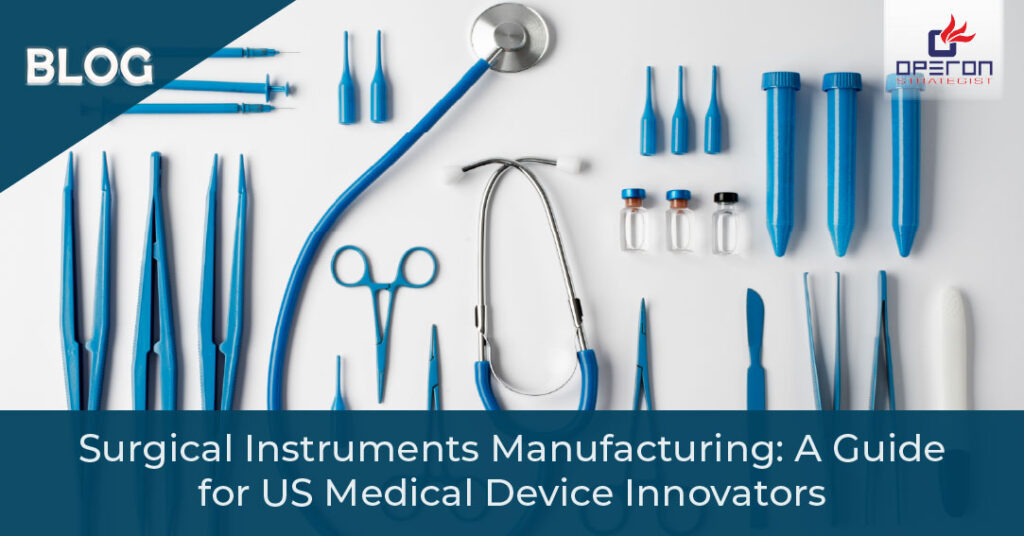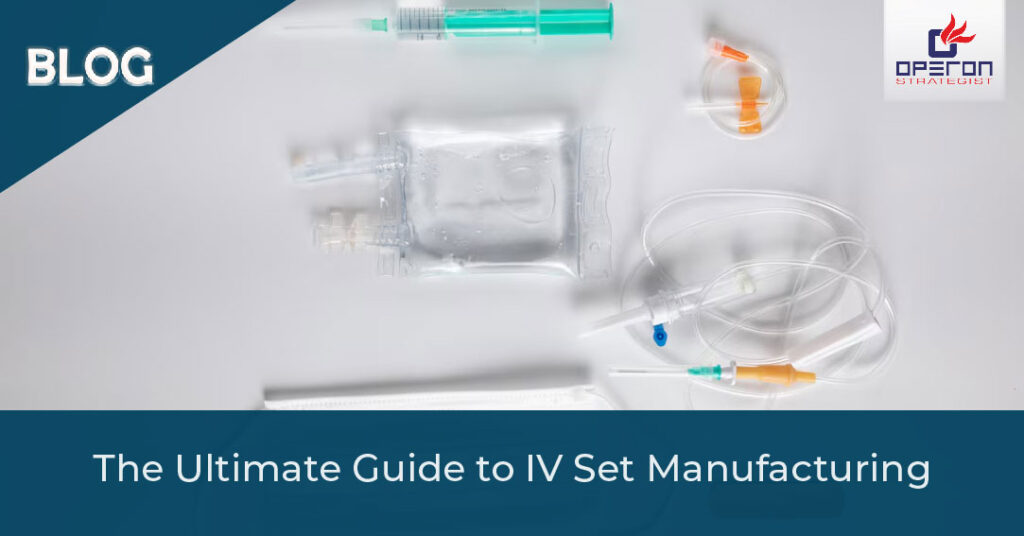
Introduction
Manufacturing surgical instruments in the United States is a complex process that combines precision engineering, strict regulatory compliance, and advanced manufacturing methods. Whether you are a startup entering the medical device market or an established manufacturer expanding your product line, this guide walks you through the key steps — from design to FDA clearance and beyond.
Why the US Market Matters?
The US is the largest medical device market in the world, and surgical instruments form a major segment of this industry. Companies that successfully launch products here gain not only access to a high-demand market but also credibility to expand globally.
To compete, you need more than technical expertise — you must meet FDA requirements, follow ISO 13485 quality management standards, and ensure manufacturing precision at every stage.
What Are Surgical Instruments?
Surgical instruments are specialized tools used during surgery or medical procedures. They include:
- Cutting instruments (scalpels, scissors)
- Grasping tools (forceps, needle holders)
- Retractors
- Clamps and occluders
- Electrosurgical and robotic devices
These instruments must meet strict standards for biocompatibility, precision, sterility, and durability.
Step-by-Step Guide to Surgical Instrument Manufacturing
Step 1: Market Research and Planning
Before starting production, manufacturers should:
- Analyze demand for specific surgical instruments (forceps, scissors, clamps, retractors, etc.)
- Identify competitor offerings and pricing trends in the US market
- Check reimbursement and hospital procurement policies
- Define whether you’ll produce reusable or disposable instruments
Pro tip: Use this stage to align product features with clinical needs and regulatory expectations.
Step 2: Design and Development
Surgical instruments must combine functionality, safety, and ergonomics. The design stage usually includes:
- Material selection (stainless steel, titanium, polymers)
- Prototyping using CNC machining or 3D printing
- Design verification and validation according to 21 CFR 820.30 Design Control
- Risk management as per ISO 14971
Getting design right early reduces costly rework during manufacturing.
Step 3: Regulatory Compliance
In the US, surgical instruments are regulated by the Food and Drug Administration (FDA).
- Classification: Most instruments are Class I or Class II medical devices.
- FDA Submission: Depending on classification, you may need a 510(k) submission or can follow exemption pathways.
- Quality System Regulation (QSR): Manufacturers must comply with 21 CFR Part 820.
- Standards: Certification in ISO 13485 is often expected for market entry.
Need help with FDA compliance? Talk to our FDA consultants.
Step 4: Manufacturing Process
Once compliance is mapped out, production begins. Typical processes include:
- Forging & Casting – for durable, reusable instruments
- CNC Machining – for precision shaping and consistency
- Heat Treatment & Surface Finishing – for strength and corrosion resistance
- Electropolishing & Passivation – to enhance biocompatibility
- Laser Marking – for unique device identification (UDI compliance)
Cleanroom environments may be required, especially for packaging sterile instruments.
Step 5: Quality Control and Testing
Every surgical instrument must undergo strict quality checks before it reaches healthcare professionals.
Testing typically includes:
- Dimensional accuracy and surface finish
- Mechanical strength and durability
- Biocompatibility testing of materials
- Sterilization validation for disposable products
- Packaging integrity and shelf-life testing
- Strong quality systems reduce risk of recalls and regulatory action.
Step 6: Packaging, Labeling, and Distribution
Packaging is not just about protection — it must also meet FDA labeling rules.
- Sterile Packaging: Required for single-use devices
- Labeling Requirements: Must include intended use, sterilization method, lot number, and UDI code
- Distribution Compliance: Ensure your supply chain meets Good Distribution Practices (GDP)
Step 7: Post-Market Surveillance
After launch, manufacturers must monitor performance through:
- Adverse event reporting to FDA (MDR system)
- Customer feedback and complaint handling
- Regular internal audits and process improvements
- This helps sustain FDA compliance and protect brand reputation.
Opportunities in Surgical Instrument Manufacturing
The surgical instrument market offers strong growth potential for manufacturers and startups alike. Here’s why it’s a smart space to invest in:
- Rising Demand: The global need for precision surgical tools is increasing with advancements in healthcare and surgery techniques.
- Innovation Potential: New materials, smart features, and ergonomic designs offer room for differentiation.
- Global Market Access: With the right certifications (FDA, ISO 13485, CE Mark), you can reach international buyers.
- OEM & B2B Partnerships: Collaborate with hospitals, distributors, or contract manufacturers to scale quickly.
- Supportive Ecosystem: Regulatory consultants, QMS experts, and turnkey service providers make it easier to enter the market.
With the right strategy and guidance, surgical instrument manufacturing is not just viable—it’s highly rewarding.
Why Work with a Surgical Instrument Manufacturing Consultant?
Whether you’re launching a startup or scaling production, partnering with a regulatory consultant can:
- Accelerate FDA 510(k) clearance
- Ensure audit-ready documentation
- Optimize your QMS for ISO 13485 and 21CFR part 820
- Avoid costly compliance delays
- Gain access to international markets (CE, UKCA, CDSCO)
Surgical Instrument Manufacturing in the USA
How Operon Strategist Can Help ?
At Operon Strategist, we specialize in end-to-end consulting for surgical instrument manufacturers. From feasibility studies and plant design to FDA submissions and CE Marking, we support you through every stage of development and commercialization.
Our services include:
- FDA 510(k) submission consulting
- ISO 13485 implementation
- Design & development documentation
- Manufacturing facility setup guidance
- Global regulatory approvals (USA, EU, India, UK)
Ready to Manufacture Surgical Instruments for the US Market?
Get expert guidance tailored to your business goals. Whether you’re developing a single-use instrument or a robotic surgical device, we help ensure speed, compliance, and quality at every step.
👉Ready to bring your surgical instrument to the US market? Get in touch with our consultants.


